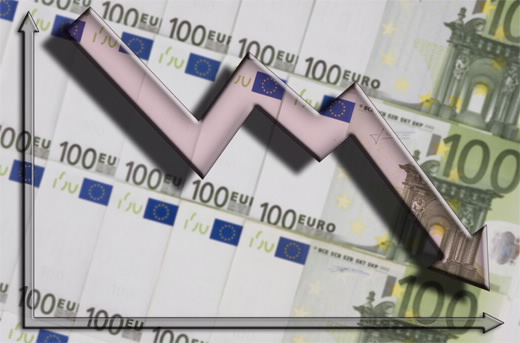The European Central Bank (ECB) should not now need the ‘nuclear option’ of full quantitative easing as growth returns to the Eurozone, though the door remains open for it, says Robeco’s chief economist, Léon Cornelissen.
The long-suffering Eurozone economy is improving to the point that we will soon see the end of hated austerity programs, Léon Cornelissen believes. Meanwhile, the threat of deflation that would seriously undermine a recovery is fizzling out, thanks to better growth figures, he says.
And with these two issues under control, the ECB’s main enemy may ironically now become the very strength of the euro, says Cornelissen. A strong currency is a problem because it makes exports more expensive and imports cheaper. This has a double-edged effect as it hurts Eurozone exporters, threatening the recovery, and encourages disinflation as imported goods become relatively less expensive.
“With a gradually strengthening economy, deflation is unlikely, and if it does materialize in the coming months, it is likely to be of a temporary nature,” Cornelissen says. “The policy mix in the Eurozone is also changing, with austerity on its way out, which will support the recovery further.”
Reluctance for generalized QE
The strength of recent Eurozone economic data means the ECB may be reluctant to go too far with monetary stimulus. Its stimulus measures announced last week, including a cut to the base rate, a negative deposit rate and mild refinancing programs, were well received by investors.
“The ECB did not enter into a program of generalized QE, which would have been a true ‘shock and awe’ approach, though it has left the door open for it,” Cornelissen says. “However, the ECB has repeatedly expressed frustration about the strength of the euro and this has been a clear motive behind the recent policy moves.”
He says the euro might well weaken against the US dollar because the American economy is doing much better after a poor start to the year. The most recent ISM Manufacturing Index reading for May of 55.4 (where figures above 50 represent economic expansion) means tapering of bond purchases by the US central bank will remain on track.
“Now that the US economy is showing a strong rebound after an unusually weather-related weak first quarter, we can expect more talk about the timing of the first interest rate hike in the US, and the dollar will strengthen as a consequence,” Cornelissen says.
Reluctance for generalized QE
The strength of recent Eurozone economic data means the ECB may be reluctant to go too far with monetary stimulus. Its stimulus measures announced last week, including a cut to the base rate, a negative deposit rate and mild refinancing programs, were well received by investors.
“The ECB did not enter into a program of generalized QE, which would have been a true ‘shock and awe’ approach, though it has left the door open for it,” Cornelissen says. “However, the ECB has repeatedly expressed frustration about the strength of the euro and this has been a clear motive behind the recent policy moves.”
He says the euro might well weaken against the US dollar because the American economy is doing much better after a poor start to the year. The most recent ISM Manufacturing Index reading for May of 55.4 (where figures above 50 represent economic expansion) means tapering of bond purchases by the US central bank will remain on track.
“Now that the US economy is showing a strong rebound after an unusually weather-related weak first quarter, we can expect more talk about the timing of the first interest rate hike in the US, and the dollar will strengthen as a consequence,” Cornelissen says.
“The strength of the euro has been a clear motive behind recent policy moves”
Inflation target miss overlooked
However, investors should not rule out the possibility of future QE in Europe, due to a prediction in the ECB’s 5 June rates announcement that may have been overlooked by the market, Cornelissen says. The central bank admitted in a back-door fashion that it won’t meet its own inflation target by the end of 2016, at the limit of current forecasting, when it now expects inflation to be 1.5%.
“As the ECB’s target is generally quantified as 1.75%, the central bank is explicitly admitting that it won’t fulfil its mandate over its own forecast horizon,” Cornelissen says. “This sets a remarkable precedent as far as we are aware, and clearly indicates a bias towards further easing, in this case – inevitably – generalized QE,” he says. “Nevertheless, we still think a policy switch towards generalized QE is unlikely.”
“All in all, the measures by the ECB are a mild boost for risky assets. Although it could be argued that too much attention is focused on monetary policy, and real economic progress could much more easily be reached through fiscal policy, investors will be comforted by the clear expression of commitment to QE should the necessity arise.”



 For Alicia Miguel Serrano
For Alicia Miguel Serrano